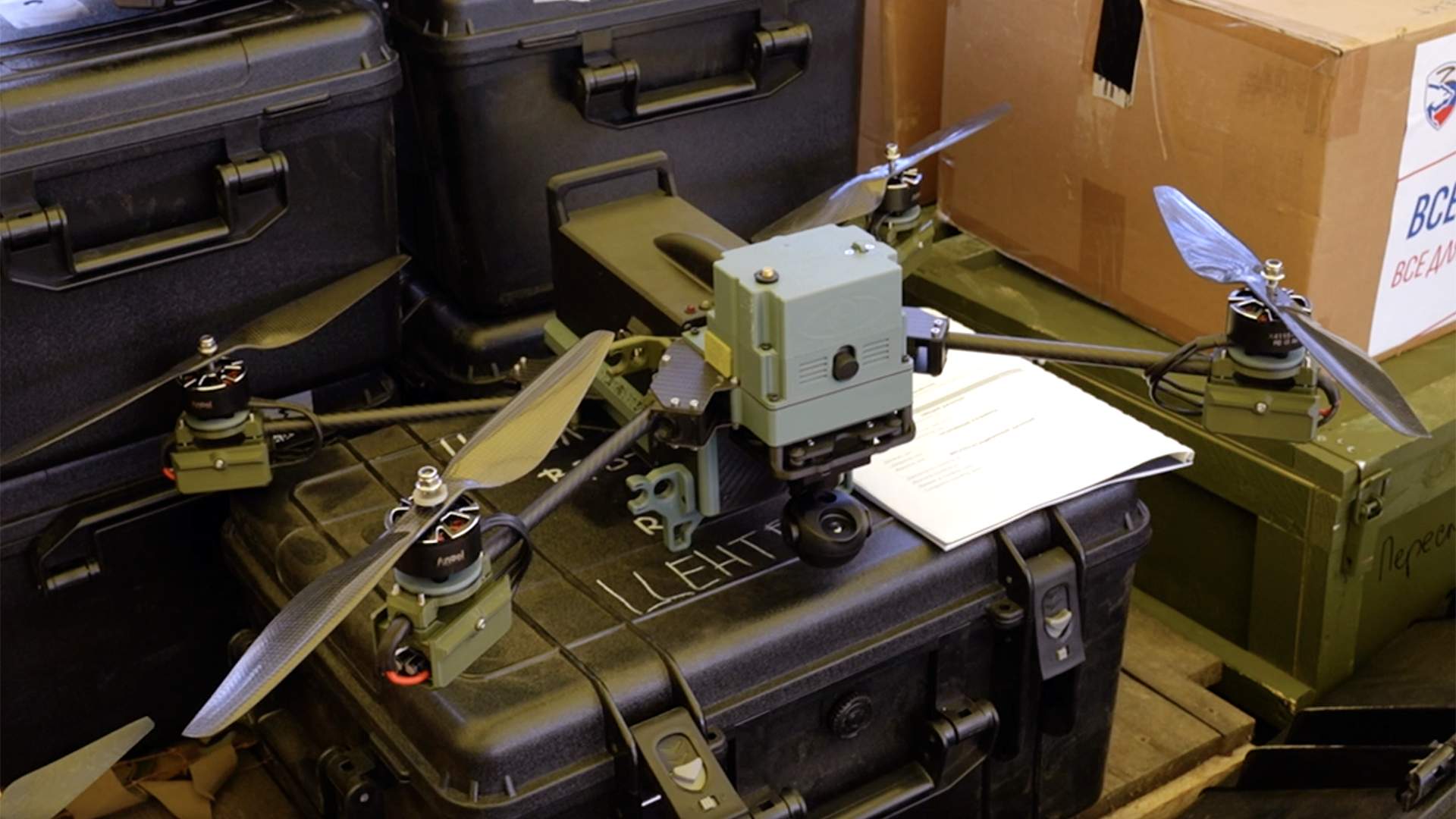- Статьи
- Army
- Sharp-sighted "Sparrow": production of a drone with the "flying binoculars" function has begun
Sharp-sighted "Sparrow": production of a drone with the "flying binoculars" function has begun

Serial production of a drone with the "flying binoculars" function has begun in Russia. It allows you to observe certain sections of the front for a long time. Also, the new device, called "Sparrow", can independently recognize military equipment. Experts believe that the new machine has all the necessary characteristics to become a reliable front-line reconnaissance drone.
Vorobey-scout
The Vorobey UAV is a reconnaissance quadcopter designed to monitor terrain and adjust artillery fire. The machine is as compact and convenient as possible to carry in combat conditions — it received a body with folding beams and screws. It is produced in two versions — day and night (with a thermal imager), the developers of the device from the Stratim design bureau told Izvestia.
The device can operate in hover mode, automatically maintaining its location. It is this function that ensures the most efficient operation of the drone in the "flying binoculars" mode, allowing you to transmit a clear picture to the command and observation post. Good video quality is provided by a camera with a powerful digital zoom. The drone has other useful functions.
"The Sparrow drone, made using artificial intelligence technology, can independently recognize targets, in particular, military equipment," the founder of the Stratim Design Bureau with the call sign Obi—Wan told Izvestia.
The drones are controlled by an operator, and reconnaissance and targeting are conducted in a digital channel, but it is possible to use a backup analog channel to get out of the jamming zone created by electronic warfare (EW) systems. This ensures EW-stable communication of the domestic development "Pozemka".
The flight range of the device is 10 km, the altitude is up to 500 m. The drone can reach speeds of 80 km/h and stay in the air for up to 40 minutes.
Drones are already being tested in the free zone, and the company is actively collecting feedback from fighters, the developers said.
"We are listening to everyone and are ready to make changes to the next versions,— Obi-Wan said.
The front needs drones
Import substitution of small Mavik-type reconnaissance drones is one of the most important tasks of our military—industrial complex, Sergey Kurapov, a researcher at the Razumovsky Moscow State Technical University, told Izvestia.
"We cannot afford to be dependent on foreign manufacturers," the expert believes. — In addition, there are loopholes in the software of all Mavics so that this commercial drone can be tracked by regulatory authorities during civilian use. This is the so-called drone-ID and some others, with which all information about the flight of the drone is transmitted to the dji aeroscope device. Our experts have learned how to remove these vulnerabilities in the firmware, but our Russian drone and domestic software are much better and more convenient.
At the front, compact and reliable reconnaissance drones are needed like air, the expert noted.
— Both we and the enemy have "Mavics" and "Autels", because of this, the electronic warfare system is learning how to extinguish intercepted drones. But the appearance of drones with other, new types of communication and software can give us a big advantage," the specialist concluded.
If the drone, battery pack and remote control are priced at 500 thousand rubles, then this is a serious competitor for Mavik—3, Sergey Kurapov believes.
The developers chose the right direction — we need scouts with good optics, military expert Vladimir Orlov told Izvestia.
"The ability to detect targets at a range of 5-6 km would greatly help, for example, artillery," he noted.
We need good resource support for such projects from the state, the expert also noted. We need serious financing that would ensure the creation of fully domestic optical sensors or a line of flight controllers, and so on, he noted.
"Then we could make domestic analogues of Mavics," he said.
Robots in the sky
Currently, Russian troops in the area of the military special operation are increasingly using robotic platforms: from ground to air. In particular, the Mockingbird repeater drone has recently begun to arrive in the army.
Earlier, Izvestia was told that video and radio control signal repeaters can be installed on these compact flying platforms. With the help of such technology, it is possible to increase the combat radius of a reconnaissance or attack drone, as well as increase the secrecy of the operators' position. The repeater will make it difficult to determine the location of the UAV calculations, which will help avoid retaliatory strikes.
Another novelty that Izvestia previously wrote about, which is actively used in the SVO zone, is the Ilya Muromets cargo FPV drone. It is a heavy tactical drone that can lift up to 8 kg of cargo and deliver it to a range of up to 15 km. The drone has eight motors, which increases flight stability and provides a reserve of power. The device is made from 100% Russian components.
The new device allows us to supply remote positions of our troops with food, water, medicines and ammunition.
For units operating in the SVO zone, changes may be made to the communications unit, which will make it possible to bypass the electronic warfare systems operating in a particular sector of the front. It is in demand for the supply of units on the Dnieper islands, where the Russian Marines operate.
Переведено сервисом «Яндекс Переводчик»








